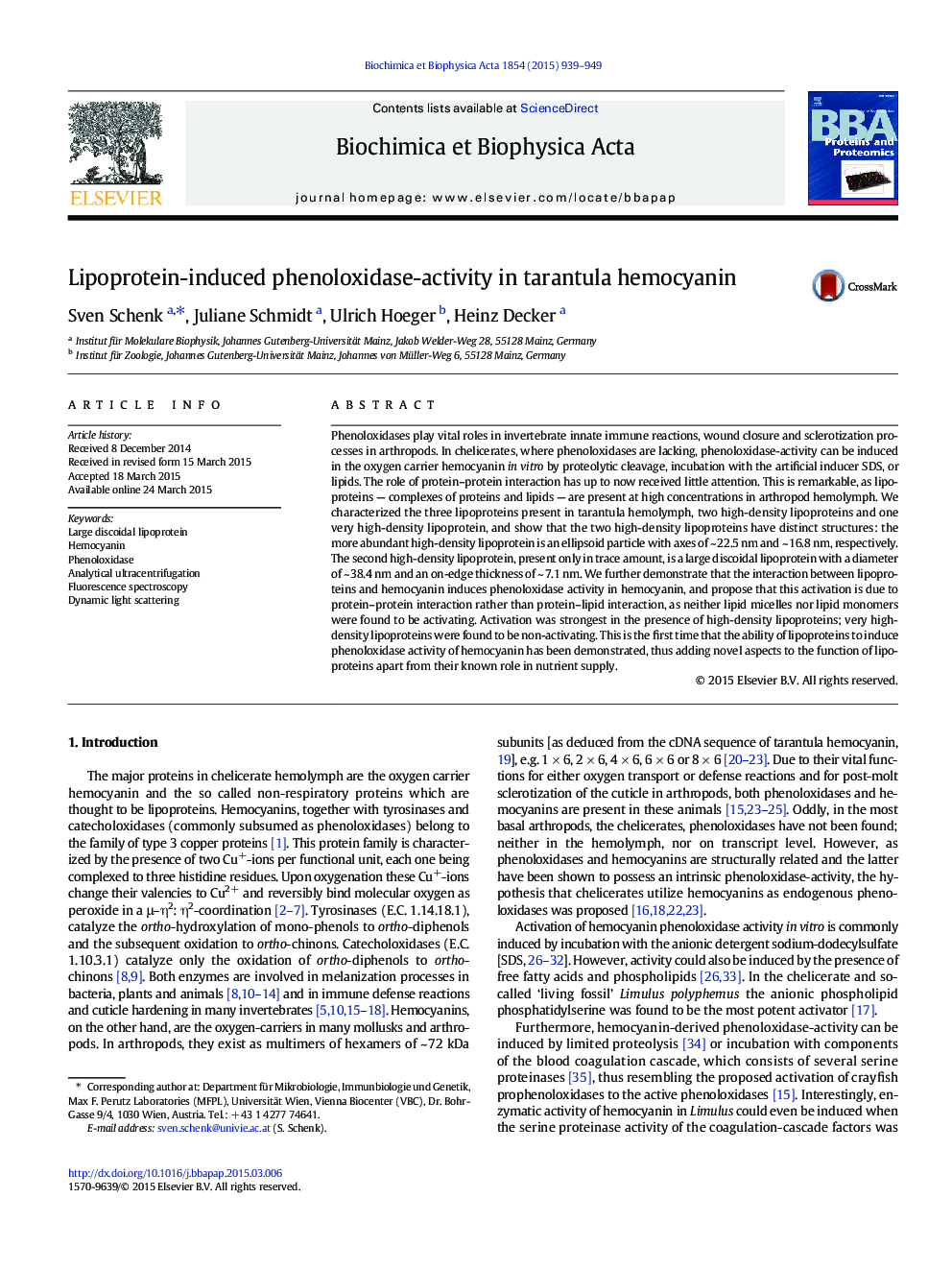| کد مقاله | کد نشریه | سال انتشار | مقاله انگلیسی | نسخه تمام متن |
|---|---|---|---|---|
| 1177801 | 962610 | 2015 | 11 صفحه PDF | دانلود رایگان |
• Three tarantula lipoproteins with distinct structures were characterized.
• Lipoproteins are inducing phenoloxidase activity in the oxygen-carrier hemocyanin.
• This activation is mediated by direct protein–protein interaction.
• Lipid micelles and monomers do not induce phenoloxidase-activation in hemocyanin.
Phenoloxidases play vital roles in invertebrate innate immune reactions, wound closure and sclerotization processes in arthropods. In chelicerates, where phenoloxidases are lacking, phenoloxidase-activity can be induced in the oxygen carrier hemocyanin in vitro by proteolytic cleavage, incubation with the artificial inducer SDS, or lipids. The role of protein–protein interaction has up to now received little attention. This is remarkable, as lipoproteins — complexes of proteins and lipids — are present at high concentrations in arthropod hemolymph. We characterized the three lipoproteins present in tarantula hemolymph, two high-density lipoproteins and one very high-density lipoprotein, and show that the two high-density lipoproteins have distinct structures: the more abundant high-density lipoprotein is an ellipsoid particle with axes of ~ 22.5 nm and ~ 16.8 nm, respectively. The second high-density lipoprotein, present only in trace amount, is a large discoidal lipoprotein with a diameter of ~ 38.4 nm and an on-edge thickness of ~ 7.1 nm. We further demonstrate that the interaction between lipoproteins and hemocyanin induces phenoloxidase activity in hemocyanin, and propose that this activation is due to protein–protein interaction rather than protein–lipid interaction, as neither lipid micelles nor lipid monomers were found to be activating. Activation was strongest in the presence of high-density lipoproteins; very high-density lipoproteins were found to be non-activating. This is the first time that the ability of lipoproteins to induce phenoloxidase activity of hemocyanin has been demonstrated, thus adding novel aspects to the function of lipoproteins apart from their known role in nutrient supply.
Journal: Biochimica et Biophysica Acta (BBA) - Proteins and Proteomics - Volume 1854, Issue 8, August 2015, Pages 939–949
